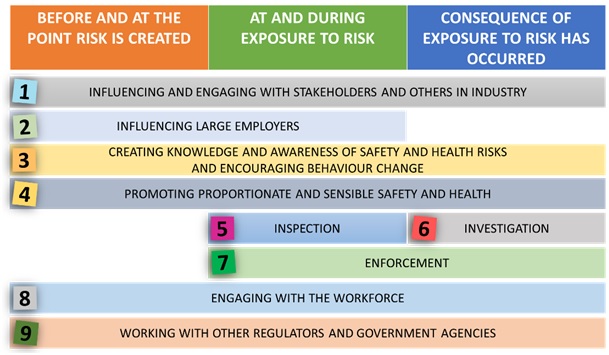Introduction
CONSTRUCTION SAFETY DIVISION AND CONSTRUCTION WORK SECTION
Construction Safety Division (CSD), DOSH Headquarters and Construction Work Section (CWS), DOSH States enforce safety, health and welfare legislations in the construction site. Construction site can be divided into two main categories, namely building operations and works of engineering construction; and in both there are various activities and workplaces, with different risks.
Fundamentally, the employer has huge responsibilities under the law to manage the safety and health risks in a construction project, which resulted from his business activity. The CSD and CWS are responsible to determine that an employer in a construction project is managing, in a way that is effective and proportionate, the safety and health of their workers and other person at his construction site. To do this, and also to achieve the main objective of preventing accident at the construction site, CSD and CWS use various regulatory interventions (refer Figure 1), to influence, encourage and advise the employers and, if necessary, prosecute those who have failed to fulfill their duties.
The regulatory interventions are used as an overarching guide for CSD and CWS to develop the Construction Industry’s OSH Strategic Plan (CIOSP), taking into account other factors such as the industry’s size and demografic, accident statistic and risk. The nine regulatory interventions are implemented at different phases, detemined by the state of the risk.

Figure 1. Regulatory interventions.
Based on these nine regulatory interventions, the annual working targets (AWT) are determined, focusing on the prevention principle, main risks and target group. The regulatory activities designed to achieve the AWT will influence and trigger changes in the construction industry, but the expected changes depends on the action of the employer. It means, our (DOSH through CSD and CWS) actions alone will not be able to ensure safety and health and traditional site inspections will never enough; but depends on the reaction by the employers in the construction industry’s supply chain.
CSD and CWS continues to improve and enhance our efforts to stimulate and catalyse change in the employer’s behaviour in the construction site. Early impact can be expected with a more positive attitudes and awareness of the workers (project managers, safety and health officers (SHO), site safety supervisors (SSS), crane operators and scaffold conductors), engaged during enforcement activities. In addition, more employers are awared and ready to fulfill their OSH responsibilities.
The punitive actions have been the push factor to change the behavior of employers and workers. Every year, CSD and CWS inspire to further improve the effectiveness of our punitive actions. The positive result from our actions is that more employers are practicing safe systems of work, close cooperation between employer and employees in ensuring construction site safety and effective management of main hazards of construction site.
The CSD and CWS introduce regulatory instrument (regulations, industry code of practice and guidelines) that will mandate the client and the designer to manage OSH during pre-construction phase, which will shift the responsibility to manage OSH from the constructor, during the construction phase to the collective responsibility between the client, the designer and the constructor during the pre-construction, construction and post-construction phases. This regulatory instrument will be the key driver to spring behavioral change among employers in the construction project, and hence improves the OSH performance of the construction industry.














